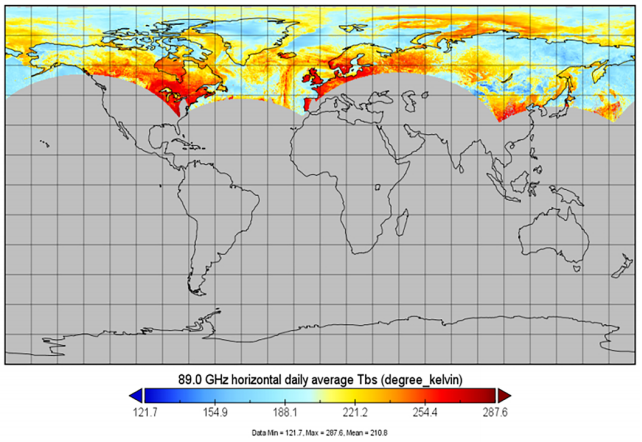Abstract
Sea ice is a crucial component of the cryosphere, and extensive research has been conducted on sea ice using microwave remote sensing due to its robustness against cloud cover and illumination variations. This paper focuses on classifying Arctic sea ice based on microwave remote sensing data. Leveraging the high stability of microwave radiometers, we analyze the characteristics of different sea ice types across the Arctic region in January 2017 using high-resolution AMSR-E/AMSR2 data at the 89 GHz frequency band. Data at this frequency are less susceptible to cloud and water vapor interference, while lower frequency bands have traditionally been more commonly used in similar studies. However, our study emphasizes the significance of the 89 GHz frequency band, which offers high-resolution data for distinguishing between multi-year ice, first-year ice, and open water. The brightness temperature differences among these sea ice types are analyzed, and a method based on these differences is proposed for classification. The fine tree algorithm in MATLAB’s decision tree toolbox is employed to generate the classification results.
Funding
This work was supported without any funding.
Cite This Article
APA Style
Zhao, Y., Wang, X., & Luo, C. (2024). Arctic Sea Ice Detection based on Microwave Radiometer in 89 GHz Channels. IECE Transactions on Internet of Things, 1(1), 36–43 https://doi.org/10.62762/TIOT.2024.528361
Publisher's Note
IECE stays neutral with regard to jurisdictional claims in published maps and institutional affiliations.
Rights and permissions
Institute of Emerging and Computer Engineers (IECE) or its licensor (e.g. a society or other partner) holds exclusive rights to this article under a publishing agreement with the author(s) or other rightsholder(s); author self-archiving of the accepted manuscript version of this article is solely governed by the terms of such publishing agreement and applicable law.


 Submit Manuscript
Edit a Special Issue
Submit Manuscript
Edit a Special Issue

